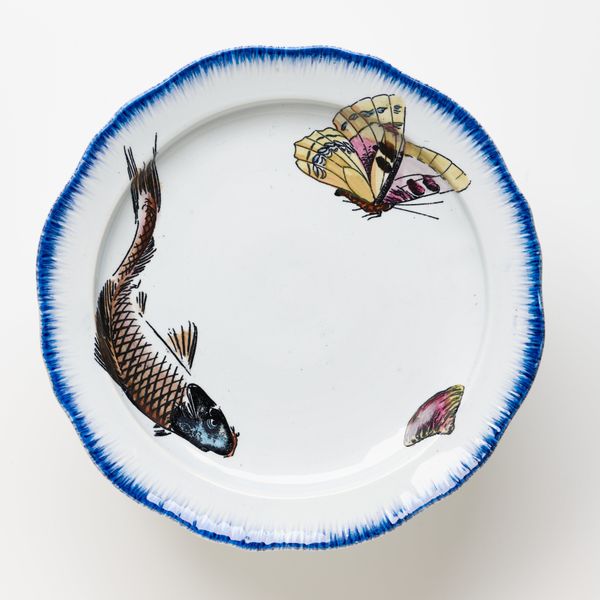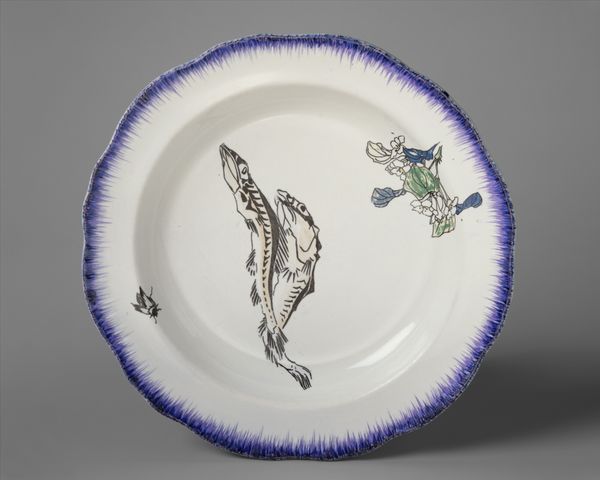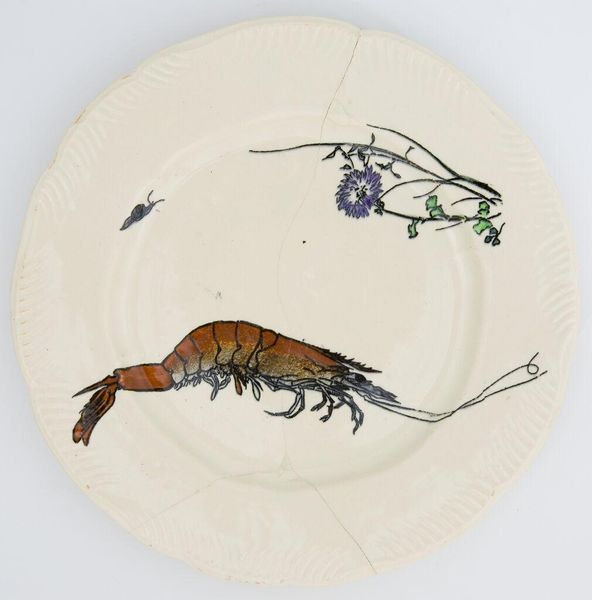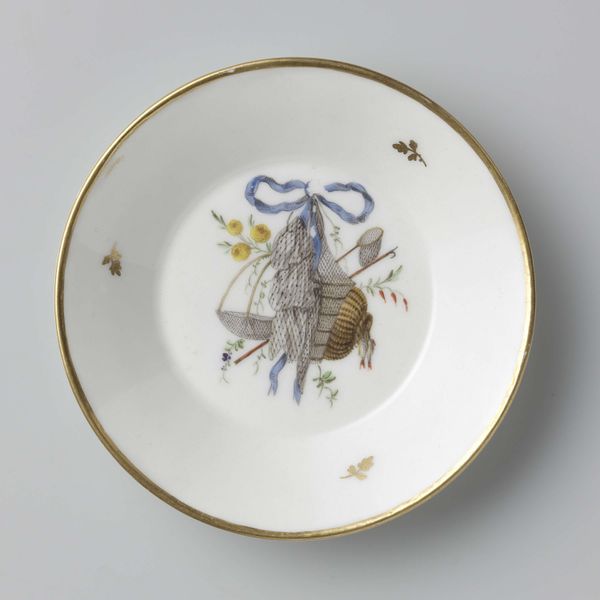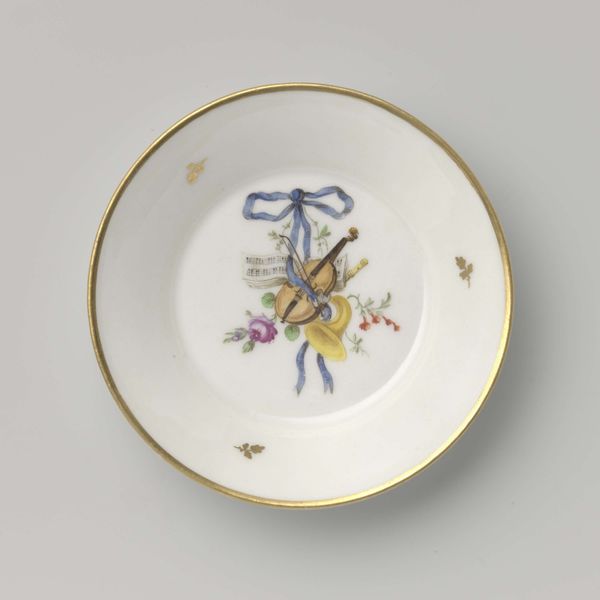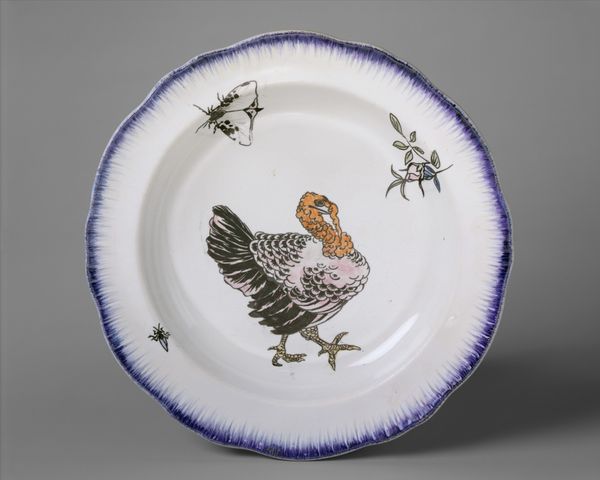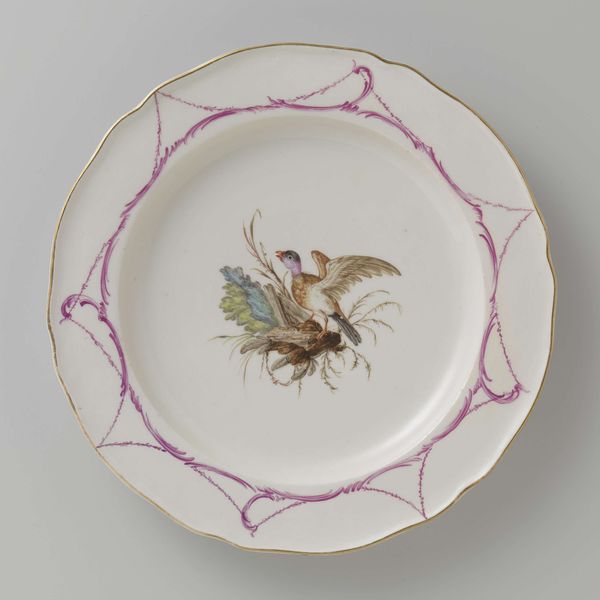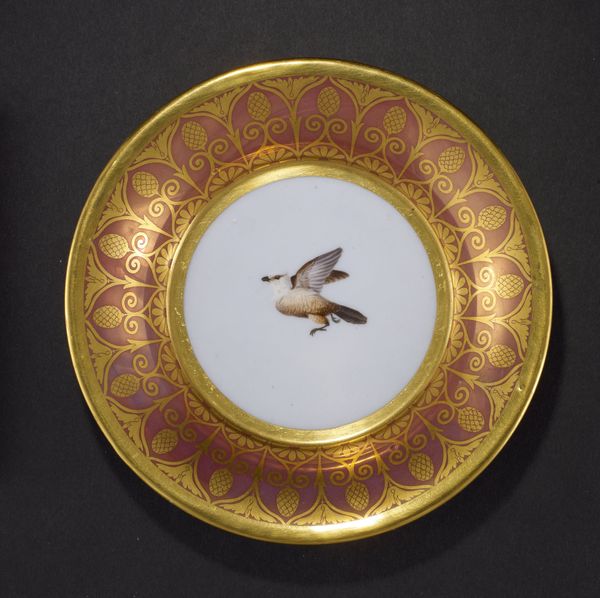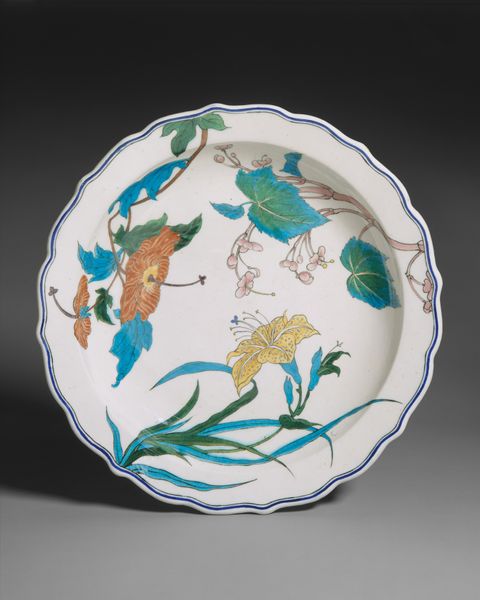
painting, ceramic, earthenware
#
fish
#
animal
#
pottery
#
painting
#
impressionism
#
ceramic
#
earthenware
#
food illustration
#
ceramic
#
earthenware
#
watercolor
Dimensions: 3 × 8 3/4 in. (7.62 × 22.23 cm)
Copyright: Public Domain
Curator: The Minneapolis Institute of Art holds an intriguing piece by Félix Bracquemond, crafted around 1866-1867. It's called "Cake Plate with Fish," made of earthenware with a painted decoration. What are your initial thoughts on it? Editor: Well, it’s certainly whimsical! Like a fever dream of the food chain on a picnic plate. A fish, a butterfly, and is that a beetle? It feels both lighthearted and strangely unsettling. Curator: Bracquemond was a pivotal figure in the revival of interest in ceramics and decorative arts in 19th-century France. The choice of everyday objects like plates as canvases allowed artists to democratize art, bringing it into the domestic sphere. How do you see this playing out? Editor: Absolutely! It takes art off its pedestal. It’s not just something you admire in a gallery; it’s part of your daily ritual. And those creatures! I can imagine this plate sparking wild dinnertime conversations. Do you think this plate design made it to common houses at the time? Curator: It would likely have been intended for a bourgeois or upper-class clientele, those who could afford such artistic ceramics. Mass production hadn't fully taken hold in a way that would make this level of artistry widely accessible. But that exposure does change consumer values, too. Editor: Makes you wonder about the diner! Did they consider the symbolism of fish with the butterfly, an emblem of freedom, the plate as a whole! Curator: Symbolism in art of this period often served moral or didactic purposes. The juxtaposition of the fish, butterfly and beetle could symbolize different states of being or elements of the natural world brought together in a human context. Editor: It also strikes me as wonderfully weird! Not the stiff perfection of so many plates but wonderfully lively. Almost as though this artist really felt close with the fish that swam or a butterfly flew over their food before placing the paintbrush to clay. Curator: It's a fantastic insight. In some ways, Bracquemond blurred those boundaries and questioned the relationship between humans and animals. By placing them so intimately together, as food for the former and design for the latter, maybe he does hint towards greater understanding. Editor: I’ll certainly be thinking differently about the plate next time I'm washing dishes, trying to see nature dancing there with my dirty dinner remnants. It does open a playful way of looking.
Comments
minneapolisinstituteofart about 2 years ago
⋮
This platter and three footed plates come from a large table service commissioned by the French dealer and publisher Eugène Rousseau (1827-1890) and designed by the painter and print maker Felix Bracquemond. First exhibited in Paris at the Universal Exhibition in 1867 and considered to be the earliest example of French ceramics inspired by Japanese art, they sparked a genuine revolution in the history of style. The service was so popular it continued to be produced up to 1940.
Join the conversation
Join millions of artists and users on Artera today and experience the ultimate creative platform.
